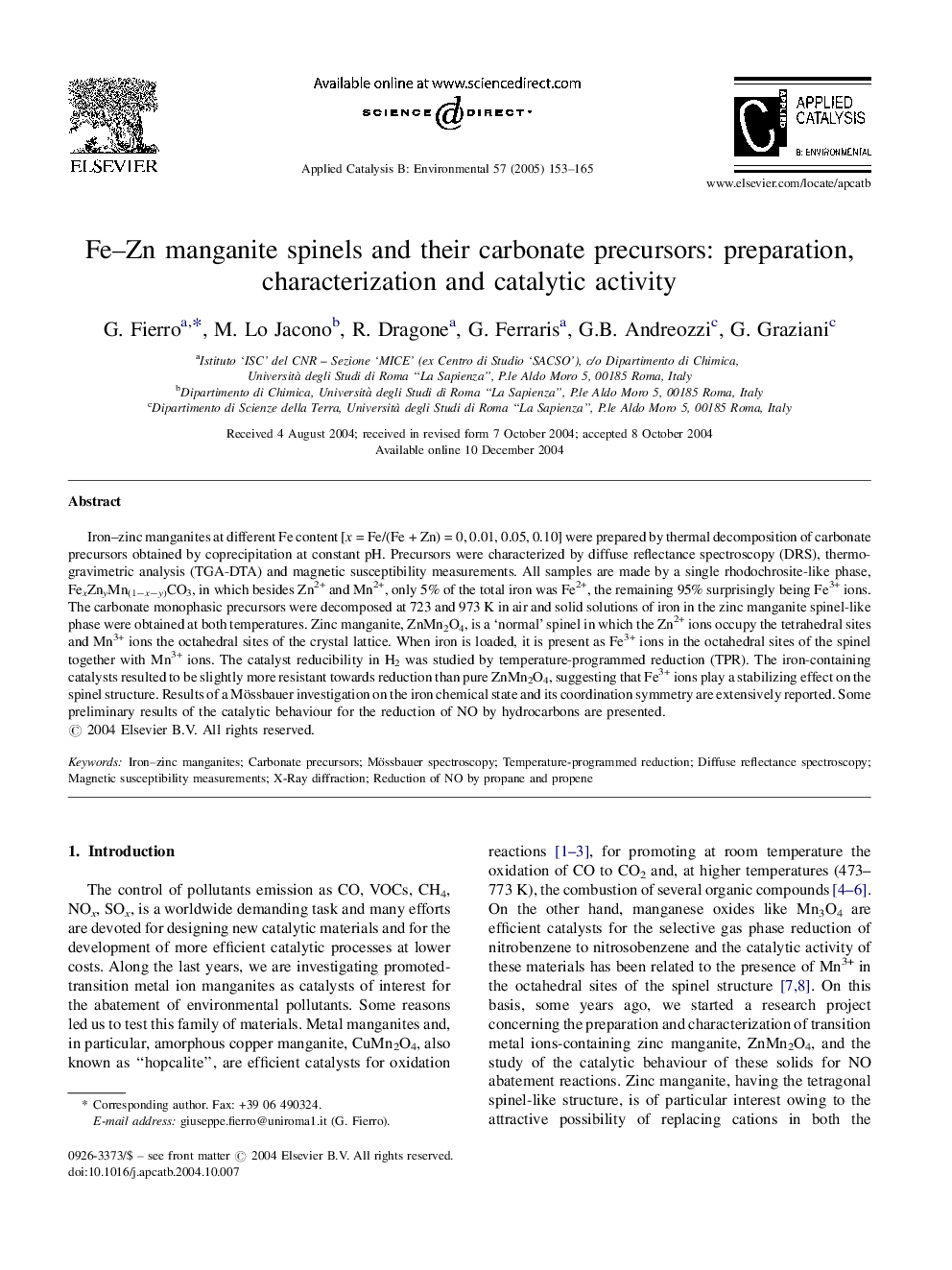| Article ID | Journal | Published Year | Pages | File Type |
|---|---|---|---|---|
| 10241554 | Applied Catalysis B: Environmental | 2005 | 13 Pages |
Abstract
Iron-zinc manganites at different Fe content [x = Fe/(Fe + Zn) = 0, 0.01, 0.05, 0.10] were prepared by thermal decomposition of carbonate precursors obtained by coprecipitation at constant pH. Precursors were characterized by diffuse reflectance spectroscopy (DRS), thermogravimetric analysis (TGA-DTA) and magnetic susceptibility measurements. All samples are made by a single rhodochrosite-like phase, FexZnyMn(1âxây)CO3, in which besides Zn2+ and Mn2+, only 5% of the total iron was Fe2+, the remaining 95% surprisingly being Fe3+ ions. The carbonate monophasic precursors were decomposed at 723 and 973 K in air and solid solutions of iron in the zinc manganite spinel-like phase were obtained at both temperatures. Zinc manganite, ZnMn2O4, is a 'normal' spinel in which the Zn2+ ions occupy the tetrahedral sites and Mn3+ ions the octahedral sites of the crystal lattice. When iron is loaded, it is present as Fe3+ ions in the octahedral sites of the spinel together with Mn3+ ions. The catalyst reducibility in H2 was studied by temperature-programmed reduction (TPR). The iron-containing catalysts resulted to be slightly more resistant towards reduction than pure ZnMn2O4, suggesting that Fe3+ ions play a stabilizing effect on the spinel structure. Results of a Mössbauer investigation on the iron chemical state and its coordination symmetry are extensively reported. Some preliminary results of the catalytic behaviour for the reduction of NO by hydrocarbons are presented.
Keywords
Related Topics
Physical Sciences and Engineering
Chemical Engineering
Catalysis
Authors
G. Fierro, M. Lo Jacono, R. Dragone, G. Ferraris, G.B. Andreozzi, G. Graziani,
